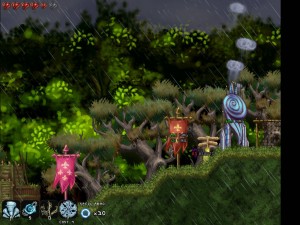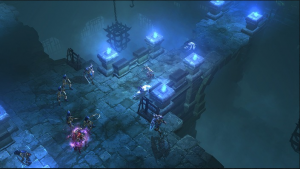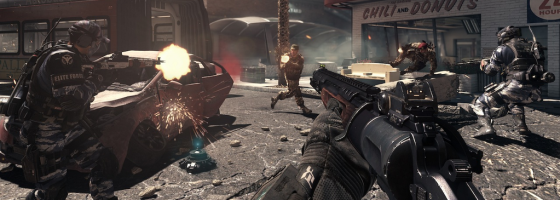When it comes to game sales, the period between September to December is the biggest time for the Game Industry, specifically the AAA market. Following the lull of summer and the holidays, this is usually the annual period for the big releases of the year and of course the big sales. And nothing says AAA more than sequels to the biggest games of last year, from Call of Duty, Assassin’s Creed and even Batman had one this year.
But we’re seeing sequels suffering with lower reviews and the once popular annual releases aren’t wowing as much as before. As Indie and other markets continue to grow, what was once one of the more attractive features of AAA games is proving to be a problem.
Making a Good Thing Last:
Sequels and their popularity are very much a product of the AAA market and has become a popular goal for many publishers. The reason has to do with risk mitigation: If you had to choose between funding 50 million dollars on a game with never before seen gameplay that may not sell well, or on the sequel to last year’s game of the year, what would you choose?
EA has said several times in the past that they prefer games that can be turned into franchises as opposed to single entry titles. Once you have gameplay that is proven to be a success, a sequel is a far easier sale. Not only that, but if you already know what the gameplay is going to be, then you don’t need as much time on development.
This is the main reason behind annually released series as their development time is nowhere near the length compared to developers working on completely new AAA properties. Originally, annual series were resigned to sports series such as the EA sports lineup. But as we’ve seen, when you have a winning gameplay formula, the same theory can be applied there as well.
Activision is the publisher that has made the most use out of annual releases (not counting sports games and EA) with the Call of Duty series and has two different developers working on Call of Duty titles for annual releases.
While taking a gameplay formula and mass producing it is the common example of sequels today, there are examples of game sequels, both from indie and AAA developers, where having a series is a positive.
Some developers use sequels as a chance to expand on an existing design: Fixing what went wrong and adding new content to match. The jump between Batman Arkham Asylum and Arkham City is just such an example, along with the ever increasing amount of detail between the GTA games.

Batman Arkham City was an impressive sequel that refined and greatly expanded on the original. Something that couldn’t happened if it was an annual series.
Assassin’s Creed is a major example, as the jump between the first and the second one was so great that it practically revitalized the series and turned it into a major player.
Now in case you didn’t notice, the examples of positive sequels mentioned were not annually released.
These developers didn’t just take a blueprint and copied it for another game, but practically tore things down and built everything back up to take the respective series further.
Another distinction we have to make when it comes to the validity of a sequel is narrative based games. If your game has a strong narrative aspect to it, then making a sequel that doesn’t change the gameplay but moves the story along is acceptable. Adventure games are built around this concept such as the Blackwell series that Ken got me hooked on earlier this year.
Sequels are not an instant example of bad design and as we’ve talked about can make things a lot better. But the examples of good sequel design are not what most publishers are looking for.
Sequelitis:
There is a big difference between a developer wanting to continue a series for either narrative or gameplay growth and a publisher looking for a series that can keep churning out games yearly.
And it seems like reviewers and consumers are starting to become fatigued. The big issue has to do with games with strong multiplayer components, as constant releases will fracture the community unless everyone continues to pay.
With single player games it falls back on the old adage of too much of a good thing. Incremental updates to a singleplayer game don’t normally work as having played through the experience before, why should someone spend $60 on the same thing with minor changes? In turn, this convinces publishers to go for changes that bring the biggest bang for their buck but at the expense of their dedicated fans.

A Valley Without Wind series was ambitious, but the cost of development and not enough sales was a major blow to Arcen Games.
Series like Dead Space and Resident Evil became more action focused at the expense of what made them popular in the first place.
Call of Duty while not changing the formula too much, has become almost like an assembly line with a total of ten games counting the release of the latest one.
As we said, the advantage of annually released games is that you don’t have to spend as much on production due to working with an established blueprint. However that also means that you don’t have the time to develop brand new content for it.
Outside of adventure games or games where the narrative is the focus, Indie games are usually not turned into franchises. There are several possible reasons why that we can talk about.
First is that Indie developers are working on original creations on their own time, without the pressure of meeting deadlines set by publishers. This gives them full control over the design. So that when it does come time to release, there is nothing that could be considered left out that needs to be done in a sequel.
And once the game is done, the designer can then focus on their next project. Another possible reason is that when we talk about Indie companies, the companies become a brand as opposed to the games themselves, which is quite the opposite of what ends up happening among AAA developers.
It’s funny how the time and money spent on major games turning them into franchises leaves the studio and the team themselves downplayed as a result. On the other hand, many indie studios release a variety of games and instead become the focus. Arcen Games has released six games this year, each one different than the last and has a built a brand for themselves.
Now there are examples of major studios that have became brands in their own right and incidentally, these studios are the big successes such as: Valve, Blizzard and Nintendo (When it comes to their first party stuff.) While you may not know what their next game will be, their name definitely precedes them and gets people excited.
Another element that has helped established Indie brands would be crowd-funding and kickstarter. As once again, the games themselves are downplayed and the developer and their credentials take center stage.

Blizzard is one of only a few major developers who has built a brand for their studio and not just the games they make.
This gives Indies an advantage with developing new games compared to AAA studios.
Because AAA focuses on games as their branding, it makes it hard for them to sell original properties as they are starting back at square one in terms of notoriety.
But an Indie studio where the studio’s name is a brand gives them a head start — if you liked one game from them, then chances are you’ll like their next game.
For my case in point, Gaslamp Games who made Dungeons of Dredmor, I’m already sold on their next game: Clockwork Empires. Even though Clockwork is completely different compared to Dredmor, I have my faith in Gaslamp that they will be able to pull it off.
Now there is a downside to the studio being the brand, as a complete failure from an Indie studio is much more damning compared to that of an AAA studio. As the brand of the studio takes a stronger hit and it is a lot harder to recover compare to having a flop at a multimillion dollar studio.
While Indie studios are free to take more risks compared to their AAA counterparts, they also don’t have the financial security that major studios have. A bad game from a major studio won’t ruin them as they usually have enough money in the bank to keep going and the success from their other games. But if an indie studio that spent years on one game to have it fail, there is a good chance that studio is going under.
Speaking previously with Chris Park from Arcen Games on the cast, he talked about how up until this year with their change in development, they had only one game considered a success previously in terms of profit: AI Wars. And if it wasn’t for the success of AI Wars, there was a good chance that Arcen would have gone under due to not having enough money coming in and the cost of development related to A Valley Without Wind.
Unfortunately the problem with annual releases and sequel branding is not going away anytime soon. As we are getting close to the next gen platforms, we are already seeing previews of sequels with not too much fanfare for original properties.
As we mentioned on the cast last week, given how much the industry has been shaken up thanks to Indie development and crowd funding, it will be interesting to see where the industry will be at by the end of the decade.


